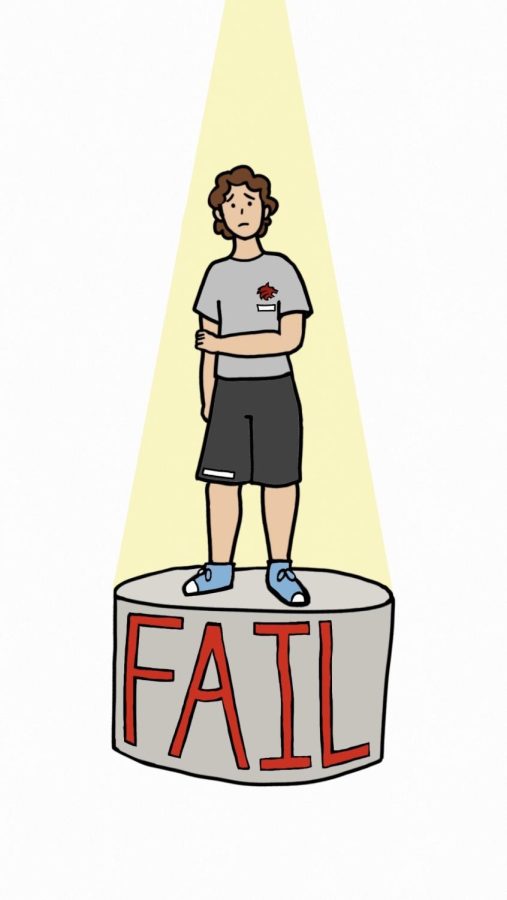The FitnessGram: a flawed system that needs to go
Rows of students lay upon the mats, their fingerprints fidgeting against the tape mark as they brace for the audio to begin. Silence grips the room as the dreaded voice fills the gym, monotonous and apathetic while students struggle to sustain the movement.
“Up…down…one…Up…down… two…”
Every year, the Physical Fitness Test (PFT) is administered in public schools around the U.S. to all students in fifth, seventh, and ninth grade. The Cooper Institute, a Dallas-based nonprofit dedicated to research and preventive medicine, designed the test (also known as the FitnessGram) and its five components: Aerobic Capacity, Abdominal Strength and Endurance, Upper Body Strength and Endurance, Trunk Extensor, Strength and Flexibility, and Flexibility. For the task specific to each section, students must perform to a certain standard to pass — anything short of the number demanded is considered failing. If a student fails in more than one area, they are required to take an additional year of P.E. to make up the credit.
According to the Cooper Institute and the California Department of Education, the FitnessGram is supposed to provide students, parents, and teachers valuable information to improve physical activity and programs. Instead, the test has become a dreaded ordeal that threatens students’ self esteem, body image, and approach to physical activity.
A lot of this confusion and discouragement stems from the seemingly unrealistic and unrelenting standards. Unlike in previous years, the concept of the Healthy Fitness Zone, where the benchmark varied depending on the students’ height and weight, has been eliminated and replaced by an all-or-nothing approach. For example, freshmen are expected to complete thirty curl-ups with the fast-paced cadence and only allowed one fault. While this may not sound difficult, the rules put certain students at a disadvantage. Since the curl-ups are only counted if the hands slide four inches from the starting position, body proportion plays a huge part in a student’s ability to achieve the thirty required. Not to mention, a student fails even if they completed twenty-nine curl-ups.
Furthermore, quality is completely overlooked when it comes to the FitnessGram. Desperate to achieve the required number, students are encouraged by teachers and peers to compromise form for quantity of sets. This is most common in the Push Up test, which requires a student’s elbows to bend at ninety degree angles and for no part of the student’s body to touch the ground. Again, body proportion can impact one’s ability to fulfill these requirements so P.E. coaches tell students to place their hands as wide as possible. Not only is this detrimental to the joints but defeats the entire purpose of the fitness test — how can a student learn from their results or lead physically active lives when they are misguided about form and fitness in general?
Furthermore, several students have been put on the spot during these assessments. Even though Body Composition is no longer a required component, some P.E. classes are still collecting the data this year. There have been many instances where students feared or dreaded stepping on the scale for personal reasons but still had to do so.
This year, the Physical Fitness Test is taking place sometime between February 1 and May 31, and many students are falling victim to the assessment’s unrealistic and rigid standards. To students, parents, and teachers, please know that a student’s performance on the Fitnessgram is not an accurate measure of their physical fitness, and especially not of their self worth. Too much blood, sweat, and tears have been shed for the biased and poorly designed FitnessGram.
Hello there! Our goal is to provide relavent, engaging journalism for readers of all ages. Your donation will support the student journalists of the Wolfpacket at Claremont High School, and will allow us to purchase equipment, print our monthly issues, and enter in journalism competitions. We appreciate your consideration!

Enya Wang is (at long last) a senior at CHS and a Head News Editor on the Wolfpacket. She didn’t realize the chaos she signed up for as a freshman Reporter,...








